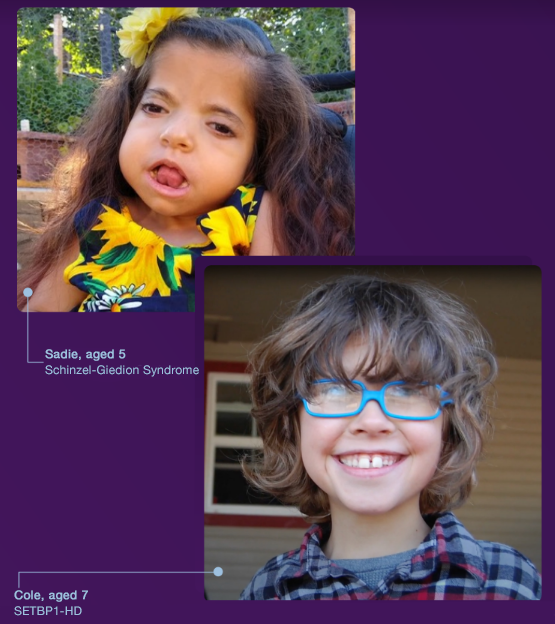
For Parents
WHAT IS SETBP1?
The SETBP1 gene is located on the long (q) arm of chromosome 18 at position 12.3. This gene contains the instructions to produce SETBP1 protein. The protein is shown to be active in numerous tissues, predominantly in the brain. This suggests that changes involving this gene may impact the development and/or function of brain cells.
SETBP1 is a DNA-binding protein that forms part of a group of proteins that act together on histone methylation to make chromatin more accessible and regulate gene expression. There is still more to learn about the overall function of the SETBP1 protein and more research is necessary.
Two distinct classes of mutations in the SETBP1 gene are recognized. These are loss of function mutations and gain of function mutations. Loss of function mutations lead to a decreased amount of the SETBP1 protein being produced are associated with SETBP1 Haploinsufficiency Disorder (SETBP1-HD). Gain of function mutations of SETBP1 lead to an accumulation of SETBP1 protein within cells and cause Schinzel-Giedion Syndrome (SGS).
Learn More About:
What is SETBP1 Haploinsufficiency Disorder (SETBP1-HD)?
Overview:
SETBP1 haploinsufficiency disorder, also known as SETBP1-HD or SETBP1 disorder, is a very rare genetic disorder caused by a loss-of-function mutation in one of the two copies of the SETBP1 gene. The one copy of the SETBP1 gene does not produce a sufficient amount of SETBP1 protein for the body to function normally. Individuals with a full or a partial deletion of the SETBP1 gene may also have SETBP1-HD. Most reported cases of SETBP1-HD are de novo. De novo mutations are spontaneous mutations and occur where the family has no history of the disorder. Approximately 160 children have been diagnosed with SETBP1-HD worldwide.
It is thought that the decreased SETBP1 protein levels result in disruption of normal embryonic development in a number of different organs including the brain, where the lack of protein production is thought to have an effect on the normal development and function of neurons (brain cells). This is important as children with SETBP1-HD have a neurodevelopmental delay with mild-severe speech impairment, mild-severe intellectual disability and autistic features as prominent features.
Although not all individuals with SETBP1-HD will exhibit all of the following symptoms, recognized features of SETBP1-HD include:
- A wide range of intellectual functioning (from normal IQ to severe ID)
- Moderate-Severe speech impairment
- Motor developmental delay
- Autistic features / Autism Spectrum Disorder
- Low muscle tone (hypotonia)
- Behavior problems
- Attention deficit
- Hyperactivity
- Young-onset vision impairment
- Anxiety
- Feeding difficulties when young
- Seizures
- Gastrointestinal issues
- Sleep problems
- Sensory processing issues
- Subtle facial differences include a broad nasal bridge, ptosis, epicanthal folds, blepharophimosis, hypertelorism, and high palate
Meet some children with SETBP1 haploinsufficiency disorder (SETBP1-HD):
Relevant References:
- Jansen, N. A., Braden, R. O., Srivastava, S., et al. Clinical delineation of SETBP1 haploinsufficiency disorder. European Journal of Human Genetics 29, 1198-1205
- Morgan, A., Braden, R., Wong, M, et al. Speech and language deficits are central to SETBP1 haploinsufficiency disorder. European Journal of Human Genetics 29, 1216-1225
- Filges I, Shimojima K, Okamoto N., et al. Reduced expression by SETBP1 haploinsufficiency causes developmental and expressive language delay indicating a phenotype distinct from Schinzel-Giedion syndrome. J Med Genet 2011;48:117–22






